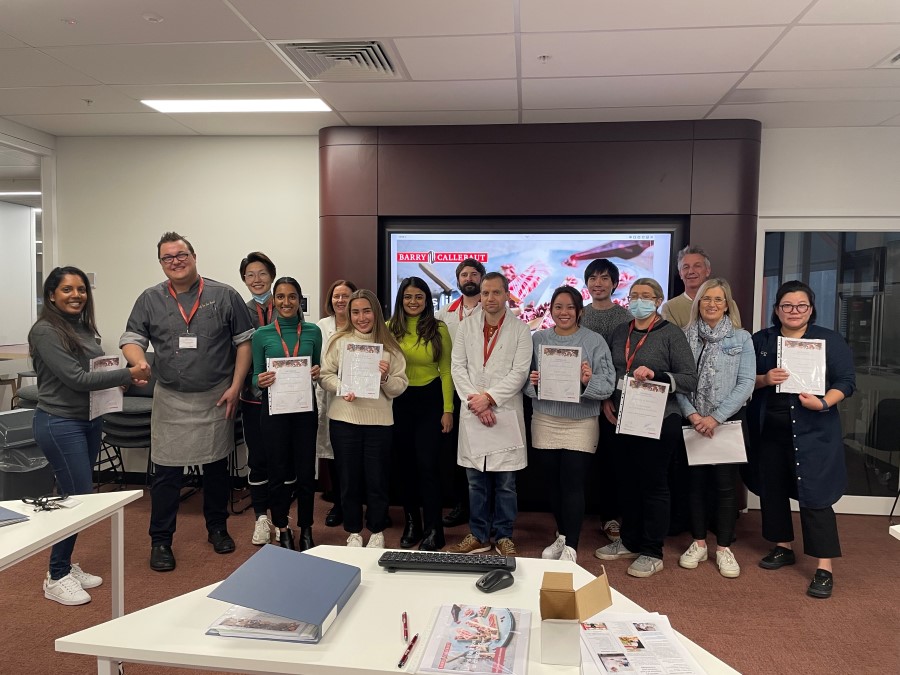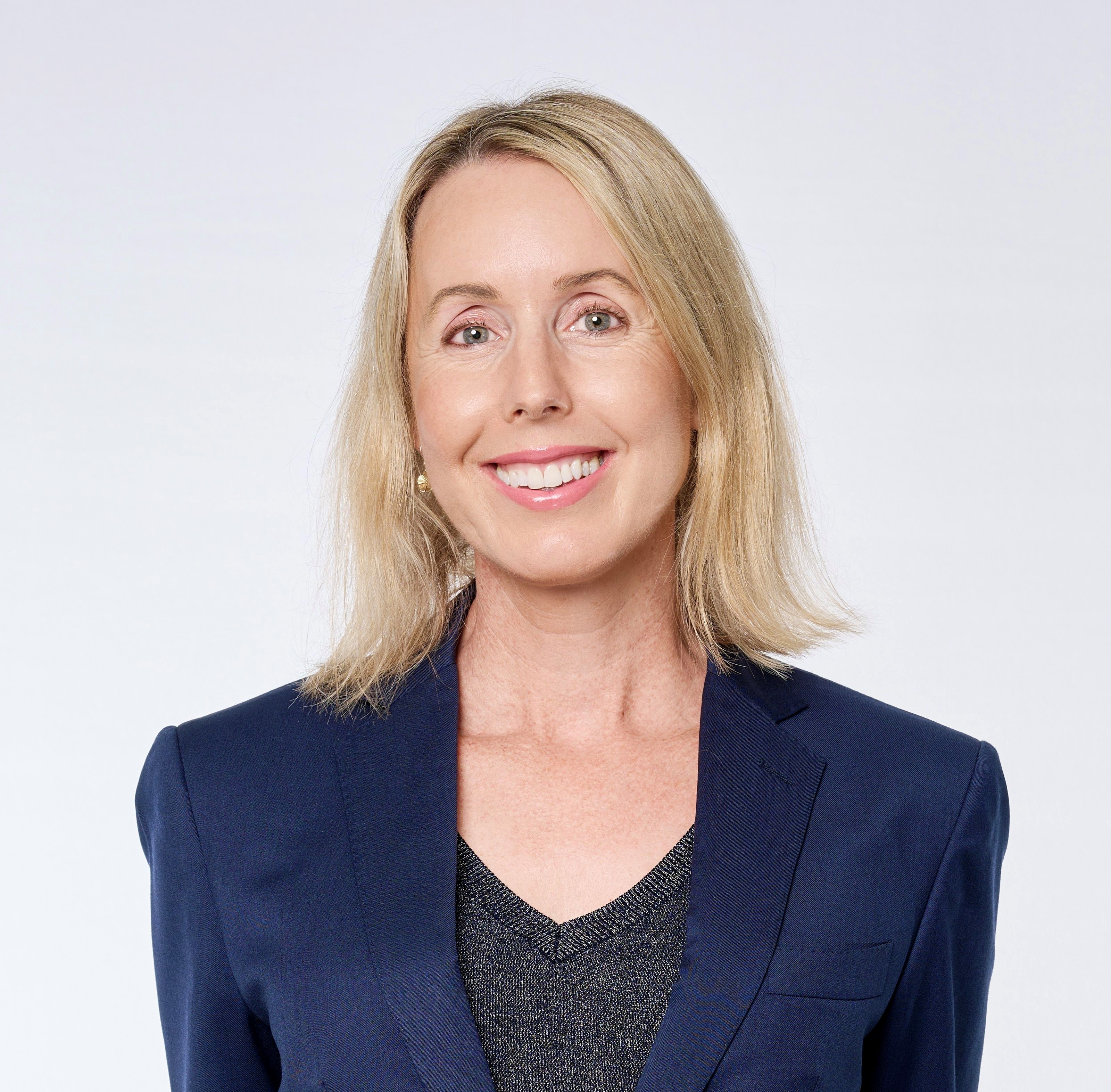
An Ai Group workshop that involved MasterChef-like teamwork and food challenges has given confectionery sector experts inspiration for exploring new trends, techniques and ingredients.
Themed Life is like a box of chocolates, the two-day workshop was presented in partnership with Barry Callebaut at the refurbished chocolate training facility at William Angliss Institute in Melbourne last month. It encouraged participants to challenge new product development boundaries while exploring international trends such as plant-based and low-sugar treats.
Sustainability and well-being are also front of mind for consumers.
A highlight was making milk chocolate hearts with a filling of roasted black-sesame paste and no-added-dairy white chocolate.
The dairy powder was replaced with coconut milk powder, said workshop presenter Andy Van Den Broeck, Customer Product Development Manager ANZ, Barry Callebaut.
“The event was all about ever-changing consumer requirements and the demand for different chocolate recipes,” he said.
“Not just different flavours or new varieties but complete reformulation — plant-based solutions, for example, or dairy alternatives, or finding solutions for high-sugar content products.”
The 13 participants, representing companies including Nestle Australia, Darrell Lea, West Australian-based Fresh Food Industries, Queensland’s GELITA and New Zealand-based J H Whittaker & Sons, worked in small groups for the practical component of the workshop.
“It was up to the participants to choose from a broad range of ingredients, with guidelines of basic recipes, to create samples to see how they would taste — to inspire them to continue on this journey to offer alternative options to consumers,” Mr Van Den Broeck said.
Some innovative ingredients were clear favourites.
“We have a milk chocolate out of Europe with the dairy replaced with rice syrup powder and fibre,” Mr Van Den Broeck said.
“You still get quite a creamy sensation even though it doesn’t have any milk fat or dairy content. That was well liked by the whole team.”
Participants also enjoyed making fillings with a product made from cacao fruit ingredients that can be used as a dairy or sugar replacer.
“We made a really nice coconut sugar caramel with that,” Mr Van Den Broeck said.
“Normally with caramel, you’ve got butter and cream, but that was replaced with the cacao fruit ingredients. The normal sugar was replaced with some brown coconut sugar, which has more depth, like molasses. That was popular.”
The workshop followed Ai Group’s ConTech2022, the Australasian confectionery sector’s premier annual conference.
It provided the perfect blend of theory and practical, said Philippa Swale, Food Technologist, Whittaker's, which recently launched a plant-based chocolate block incorporating NZ-grown toasted oats.
“The practical element was fun, giving us the opportunity to try different techniques, such as tempering chocolate on a slab, and ingredients that we hadn’t used before,” Ms Swale said.
“It was a terrific way to share ideas and meet other people in the industry.”
Pridhuvi Thavaraj, Product Development Technologist, Darrell Lea, said the energy in the class was great.
“It was like MasterChef, it really was,” she said.
“We were exploring different ingredients and techniques and making mistakes along the way and thinking ‘how we can make it better next time?’
“I enjoyed it right from the beginning. It gave me insight into what might work and what might sell.
“It was inspiring because right now, everyone wants healthier options. We experimented with alternative sugars, such as coconut sugar. It had a very interesting taste profile and flavour, different to other chocolate you would find in the market.
“We tried a lot of recipes and I gained many tips that I’m hoping to apply.”
Innovation is crucial to the confectionery industry, Ms Thavaraj said.
“It’s like a doctor who needs to update their skills,” she said.
“People change, their preferences change and there are always new trends and inclusions, so we need to keep redeveloping. That’s what stimulates the market.”
Mr Van Den Broeck said the informal event fostered the sharing of ideas, rather than competition.
“At the end of each day, we got together and evaluated our efforts,” he said.
“We were not making products ready for market, so people were not afraid to share things or to ask openly about things.
“The whole idea of the workshop was to arm industry with insights into what can be done, the pros and cons and what you need to be aware of.
“The theory part is nice but if you don’t taste it, it’s difficult to understand. We had a wide range of products that we were able to taste so attendees could think: ‘How can I start using that?’
“They took that further and started creating.
“A lot of things surprised them, in terms of flavour combinations or how close alternatives could come to the regular variety.
“A lot of eye opening was happening in that regard. People were taking active ideas on what they want to start pushing through their product line.
“In the end, yes, they are competing brands but when it comes to ideation and food technicians, we all speak the same language.”
Caption: (L-R) Pri Thavaraj, Darrell Lea; Andy Van Den Broeck, Barry Callebaut (Australia); Ruby Lo, Nestle Australia; Kethmi Eriyagama, Coles; Kris Wilson, William Angliss Institute; Georgia Frazer, Nestle Australia; Helly Senjaliya, GELITA Australia; Andrew Murphy, Barry Callebaut (Australia); Matthew Little, Yarra Valley Chocolates; Karen Tam, Fresh Food Industries; Ray Lam, J H Whittaker & Sons; Lynda Jesser, Barry Callebaut (Australia); Ben Kolly, Haigh Manufacturing; Philippa Millar, J H Whittaker and Sons and Haley Koo, Godiva Australia Pty Ltd.

Wendy Larter is Communications Manager at the Australian Industry Group. She has more than 20 years’ experience as a reporter, features writer, contributor and sub-editor for newspapers and magazines including The Courier-Mail in Brisbane and Metro, the News of the World, The Times and Elle in the UK.